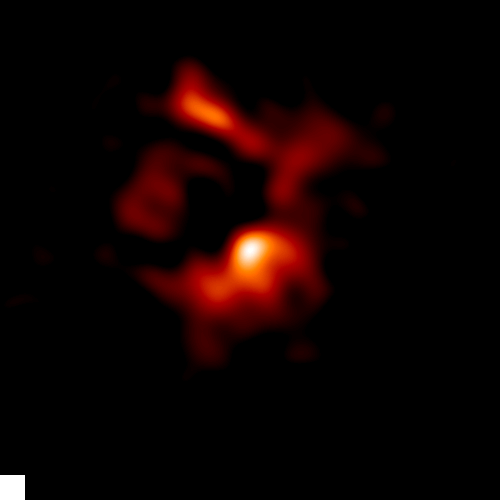IRC +10216 |
|---|
IRC +10216 |
|---|

Well it may look like something you should wipe off your windscreen after a long car trip, but to astronomers this is one of the most famous stars in the sky. Known variously as CW Leo, IRC +10216 or RAFGL 1381 (did I already mention our Poetic streak in Astronomy), this is the classic example of a dying star. Buried in the center of clouds of gas and dust lies a swollen Red Giant Star which is having the final, spectacular party of its life.
The animation to the left cycles back and forth over about 3 years of time-lapse images. The motion of the clumps and plumes of dust, which are glowing hot here in the inner regions near the star, can be seen as a sort of "breathing" in the movie. As the dust flows out from the star, it eventually disperses into the galaxy, finding its way into big clouds which may, in due time, collapse again to form a new generation of stars (see the young star images).
What is crucial, however, is that this new generation of stars will be formed from material with a different chemical composition, because the outflows from stars like IRC +10216 contain elements heavier than hydrogen and helium, elements like carbon, nitrogen, iron, silicon. Indeed if it weren't for these dying stars enriching the chemistry of the matter in the galaxy, there would be no rocky planets, no metals, and no life. Most of the matter which forms every human body, if you go back a few billion years, must have been part of the shroud of a dying star just like this one.
This research was supported by grants from the
Australian Research Council
and the
US National Science Foundation
Stellar Astronomy and Astrophysics Program.
For more information, contact: Dr Peter Tuthill